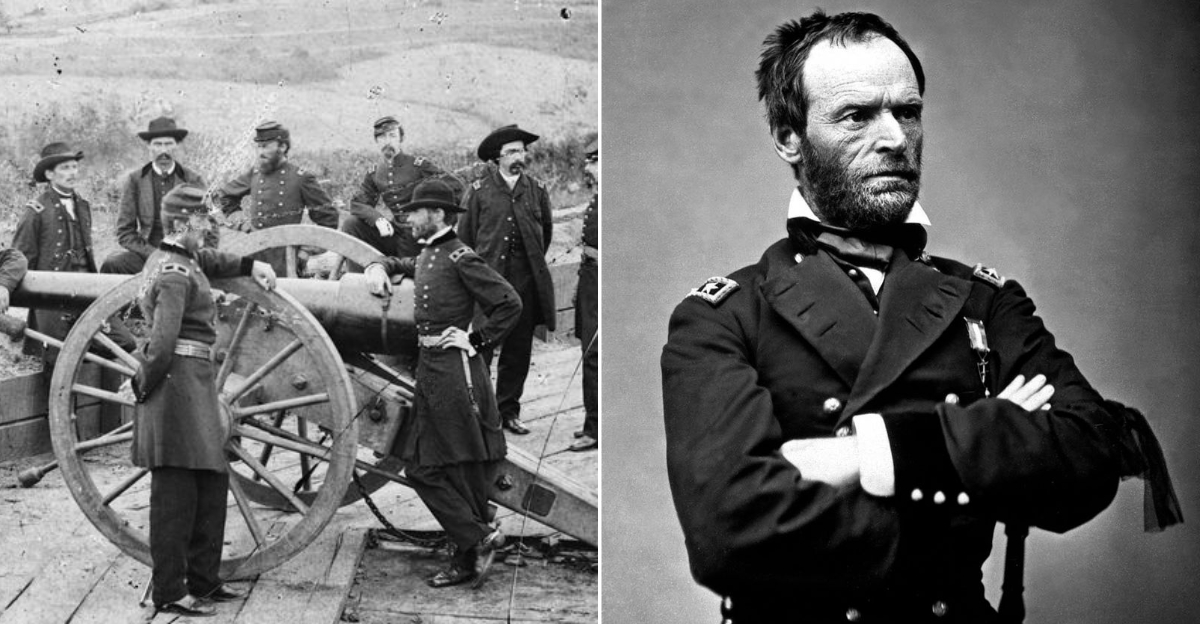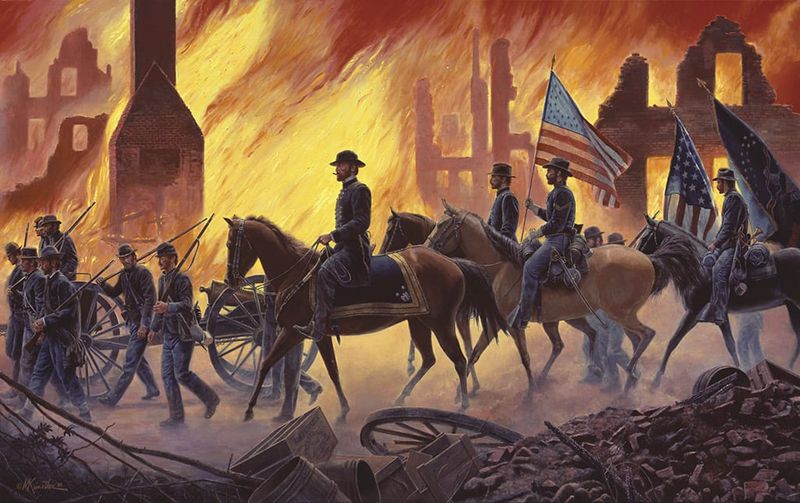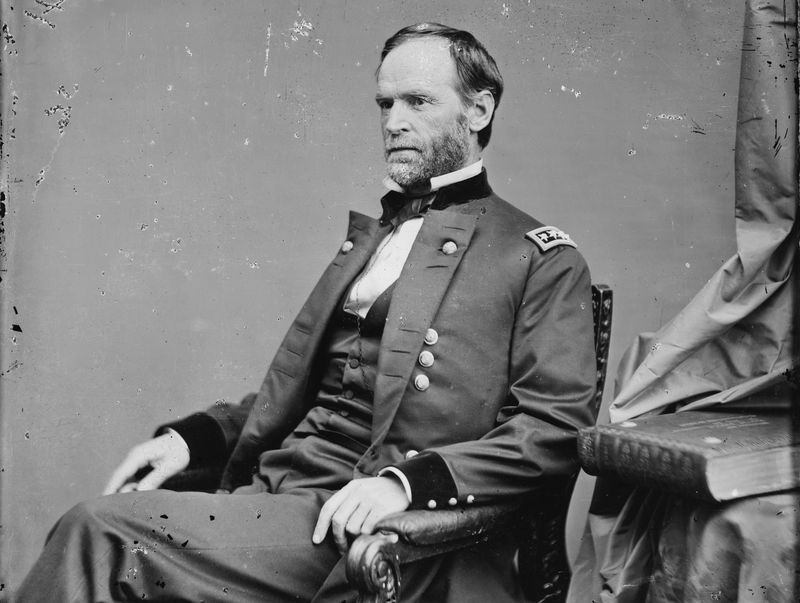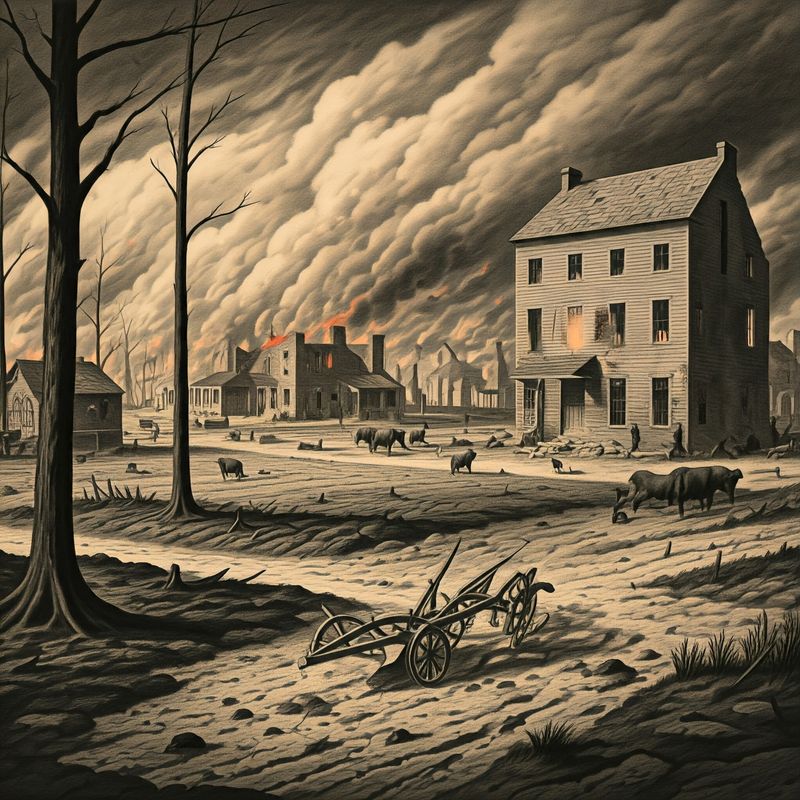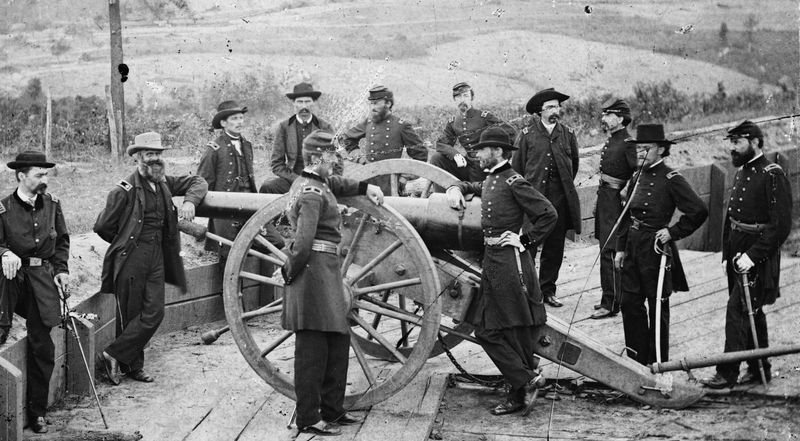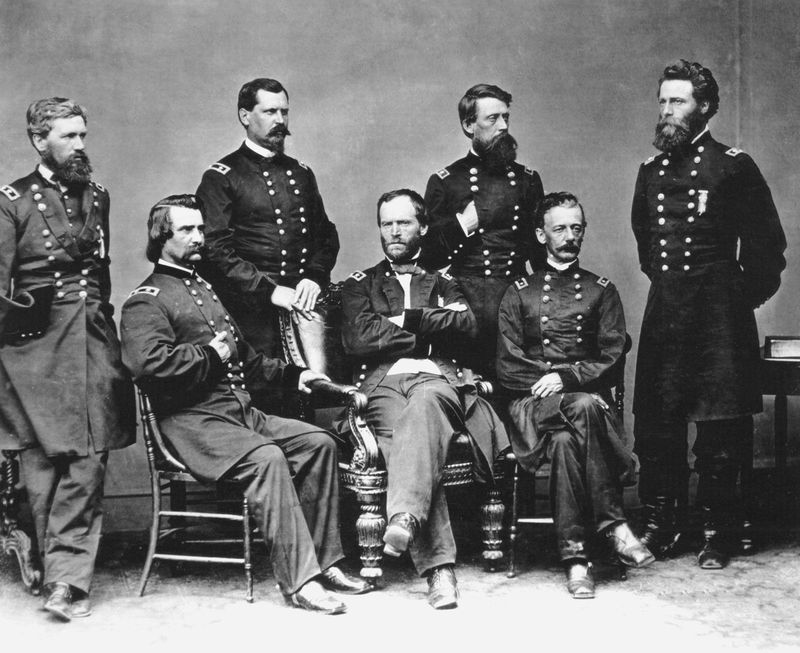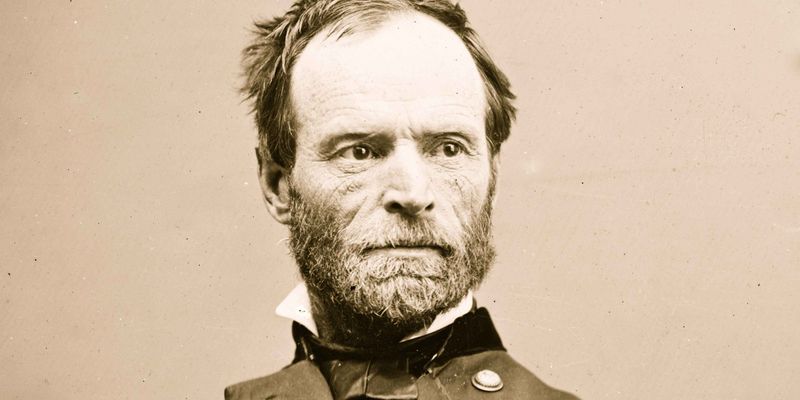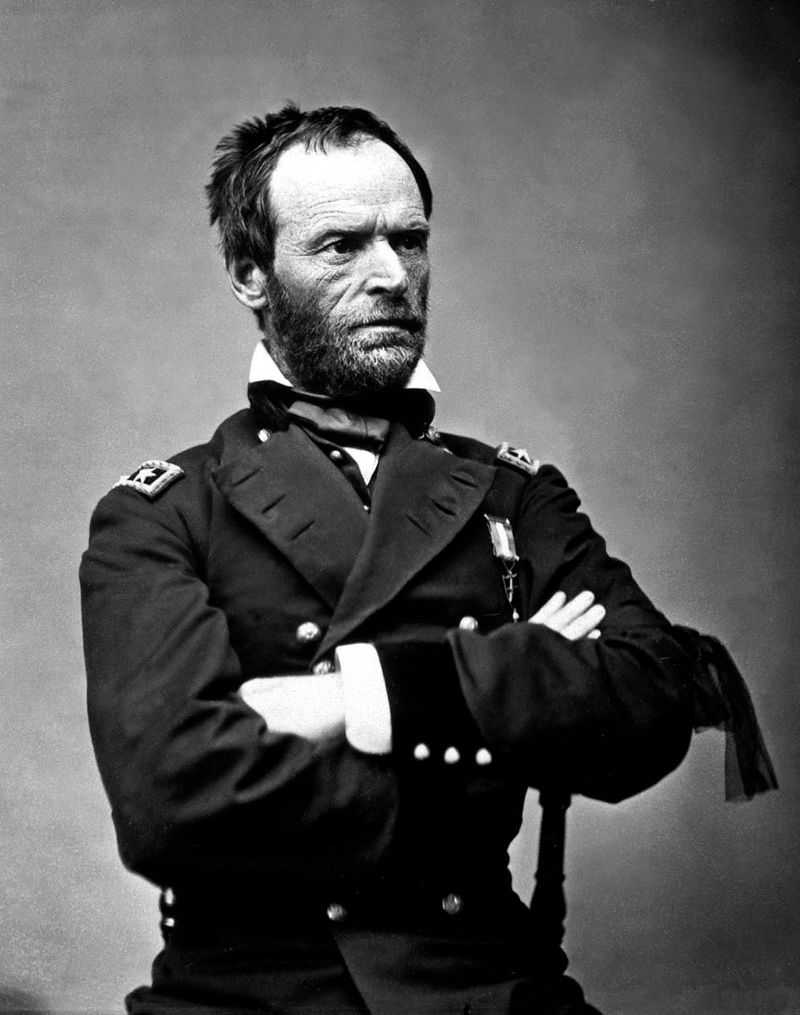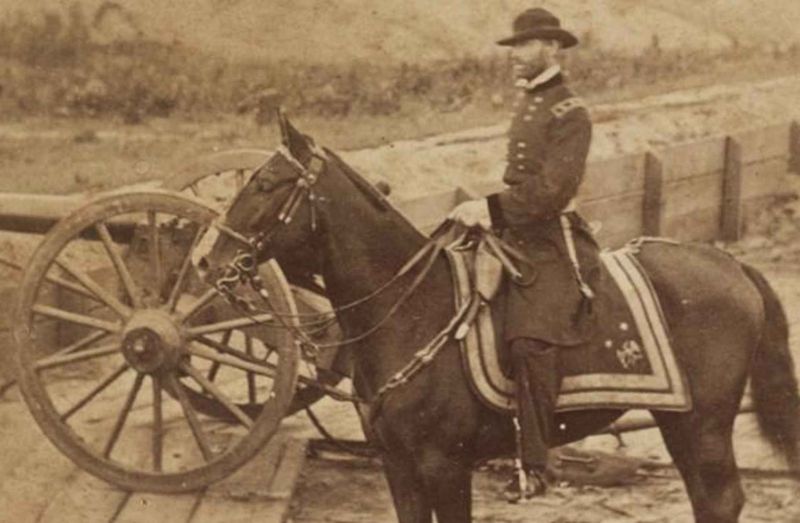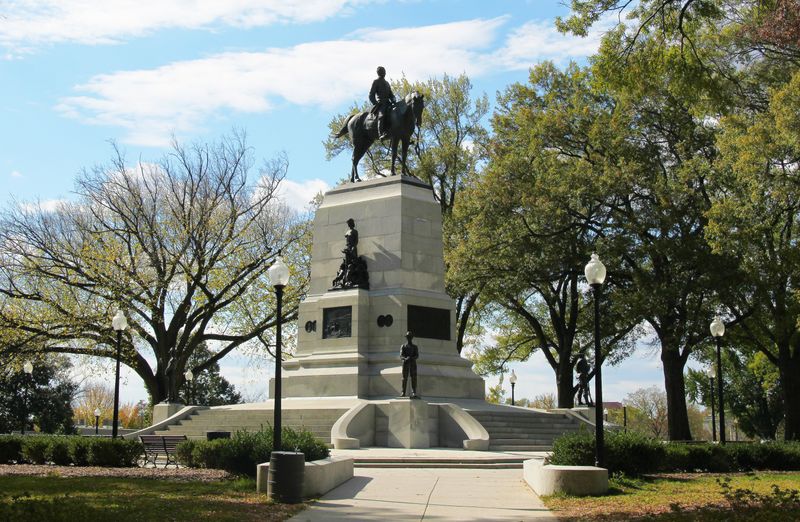General William Tecumseh Sherman remains one of the most polarizing figures in American history. Known for his “total war” strategy during the Civil War, Sherman’s tactics have sparked debate for over a century. While his military genius is often lauded for hastening the Union’s victory, the ethical implications of his methods continue to generate controversy.
As an architect of devastating campaigns, Sherman is both commended for his decisive actions and criticized for the extensive collateral damage he caused. This blog explores the multifaceted legacy of a man whose actions still echo in contemporary discussions about warfare and morality.
1. Revolutionized Modern Warfare with “Total War”
Sherman’s infamous March to the Sea introduced a brutal new strategy: targeting not just enemy troops, but civilian infrastructure. His scorched-earth tactics devastated Georgia and the Carolinas, helping end the war faster—but raising moral questions about civilian suffering in war.
With ruthless efficiency, Sherman aimed to break the South’s will to fight. The campaign left many homeless and destitute, forever changing the landscape of modern warfare. His approach, while effective, remains controversial for its profound impact on civilians.
Did you know? Sherman’s methods influenced military strategies in both World Wars, demonstrating his lasting influence on military doctrine.
2. Cemented Union Victory in the Civil War
By breaking the Confederacy’s backbone in the Deep South, Sherman was pivotal in securing Northern victory. Yet for many Southerners, his name became synonymous with destruction and humiliation.
Sherman’s campaigns, particularly his capture of Atlanta, were critical in undermining Southern morale. The fall of Atlanta not only had military implications but also political ones, bolstering Lincoln’s re-election prospects.
While some view Sherman as a hero, others see him as a symbol of Northern aggression. His actions underscore the complexities of war, where triumph for one side often means devastation for another.
3. Symbol of Southern Resentment
Sherman’s campaigns left a lasting scar across the South. Even generations later, he is remembered by many Southerners as a villain—a perception that fuels debate over how history remembers him.
The burning of cities and farmland contributed to a narrative of Northern oppression. Sherman became a figure embodying Southern loss and defiance, his name evoking strong emotions even today.
Did you know? In some Southern communities, stories of Sherman’s march are passed down as cautionary tales, illustrating the enduring cultural rift his actions helped create.
4. Key Role in the Fall of Atlanta
The capture of Atlanta was not only a military triumph but also a major political boost for Abraham Lincoln’s re-election in 1864. However, the burning of the city still evokes images of excessive devastation.
Sherman’s siege showcased his tactical prowess and willingness to employ psychological warfare. This victory was a turning point, crippling Confederate infrastructure and war capabilities.
Despite its strategic success, the destruction wrought remains a point of contention. The fall of Atlanta is emblematic of the harsh realities of war where short-term gains often come with long-term scars.
5. Influence on U.S. Military Doctrine
Sherman’s ideas about total war and psychological warfare became models for future military strategies, influencing both World Wars. Admirers call him a visionary—critics say he blurred the lines between soldier and civilian too far.
His doctrines emphasized relentless pursuit and demoralization of the enemy. This approach has been studied extensively in military academies worldwide.
Did you know? Sherman’s concept of “hard war” inspired tactics during the Vietnam War, highlighting his enduring influence on how conflicts are waged and won. His strategies are a testament to the delicate balance between military necessity and ethical considerations.
6. Resisted Political Office and Presidential Pressure
Unlike many of his peers, Sherman refused to run for president and famously said, “I will not accept if nominated and will not serve if elected.” He’s admired for his integrity—but some argue he avoided accountability for controversial decisions.
Sherman’s disinterest in politics illustrates a focus on military service over personal ambition. His stance offers insight into his character, where duty overshadowed personal gain.
His refusal to enter the political arena is seen by some as a missed opportunity to influence post-war policy. Yet, his dedication to the military was unwavering, leaving a legacy of steadfast commitment.
7. Redefined Post-War Reconstruction Briefly
Sherman issued Special Field Orders No. 15, which granted land to freed slaves—planting the idea of “40 acres and a mule.” But the order was soon overturned, and some blame Sherman for not defending Black rights more forcefully.
The orders, although short-lived, sparked hope for economic independence among African Americans. However, the failure to enforce them left many aspirations unfulfilled.
This episode highlights Sherman’s complex role in Reconstruction, straddling the line between progressive ideas and pragmatic constraints. His actions in this period are seen both as a step forward and a reminder of unachieved promises.
8. Led Violent Campaigns Against Native Americans
After the Civil War, Sherman oversaw military efforts in the West during the Indian Wars, using the same harsh tactics he employed in the South. His role in Native displacement and violence remains a dark stain on his legacy.
Utilizing scorched-earth policies, Sherman’s strategies aimed to suppress Native resistance. These campaigns contributed to the loss of indigenous lands and lives.
Did you know? Sherman’s approach in the West echoed his Civil War tactics, reflecting his belief in total warfare. His actions remain a contentious part of his legacy, illustrating the complexities of American expansionism.
9. Divided Legacy in Monuments and Memory
From schools and streets named after him to Civil War statues, Sherman has been both honored and targeted for removal in modern debates about how America memorializes its past.
His legacy, etched in bronze and stone, is a battleground for interpreting historical memory. As dialogues about historical figures evolve, so too does Sherman’s place in the cultural landscape.
While some see monuments as tributes to his military genius, others view them as symbols of oppression. This division underscores broader discussions about how history is commemorated and who decides which legacies endure.
